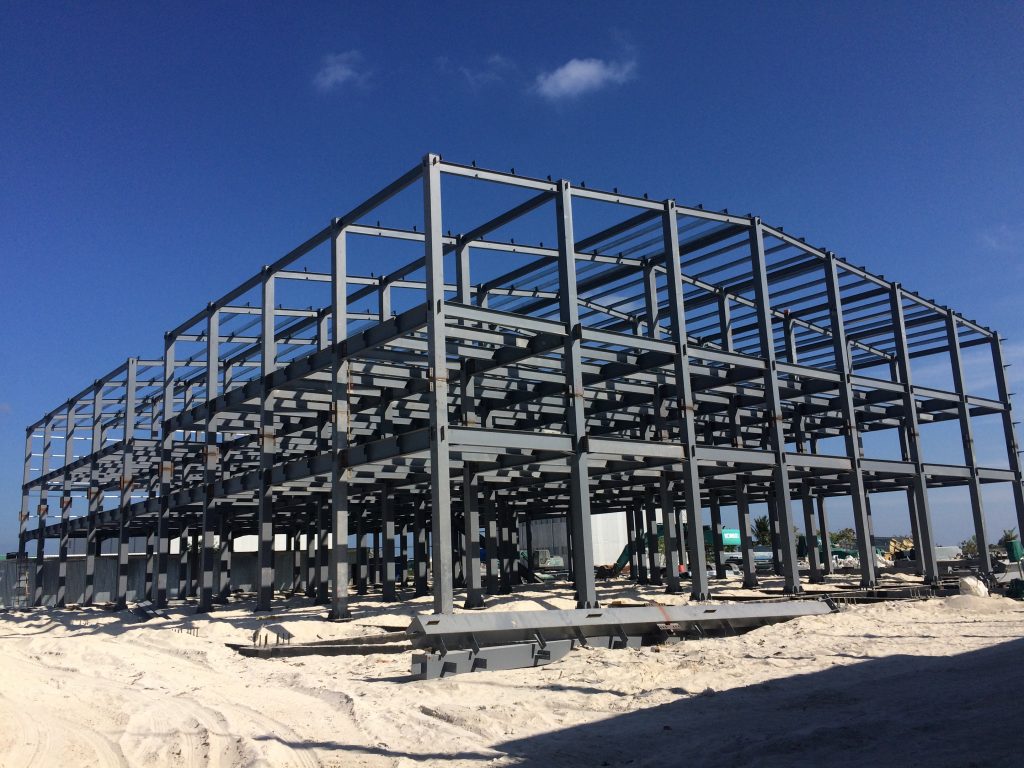Vertical Farming Expansion Fueled by Lida Group’s Multi-Level Steel Farm Houses with Precision Steel Structure Engineering
2025-Jul-25 16:55:19
By Admin
1. Introduction
In the face of a burgeoning global population, projected to reach nearly 10 billion by 2050, and the escalating challenges of climate change, the agricultural landscape is on the cusp of a revolutionary transformation. Vertical farming has emerged as a beacon of hope, offering a sustainable and efficient solution to meet the surging demand for food while minimizing the industry’s environmental footprint. This innovative approach to agriculture, which involves growing crops in vertically stacked layers within controlled environments, has the potential to redefine the way we produce and consume food.
The concept of vertical farming is not new, but recent advancements in technology and engineering have propelled it into the mainstream. With the ability to cultivate crops year-round, regardless of weather conditions or geographical location, vertical farming holds the promise of increased food security, reduced water usage, and decreased reliance on chemical pesticides and fertilizers. As the world grapples with the consequences of traditional agriculture on the environment, vertical farming offers a more sustainable alternative that can help preserve natural resources and mitigate the effects of climate change.
At the forefront of this vertical farming revolution is Lida Group, a trailblazing company that has been instrumental in driving the expansion of this innovative agricultural practice. Through its cutting-edge multi-level steel farm houses and precision steel structure engineering, Lida Group has overcome many of the challenges that have hindered the widespread adoption of vertical farming. By providing a robust and customizable infrastructure, Lida Group has enabled farmers and agricultural entrepreneurs to establish efficient and productive vertical farms that can thrive in a variety of settings.
This article delves into the world of vertical farming, exploring its principles, benefits, and challenges. It also examines the pivotal role that Lida Group has played in advancing the technology and making vertical farming a viable option for farmers and businesses around the world. Through a detailed analysis of Lida Group’s multi-level steel farm houses and precision steel structure engineering, we will uncover how these innovative solutions are revolutionizing the agricultural industry and paving the way for a more sustainable future.
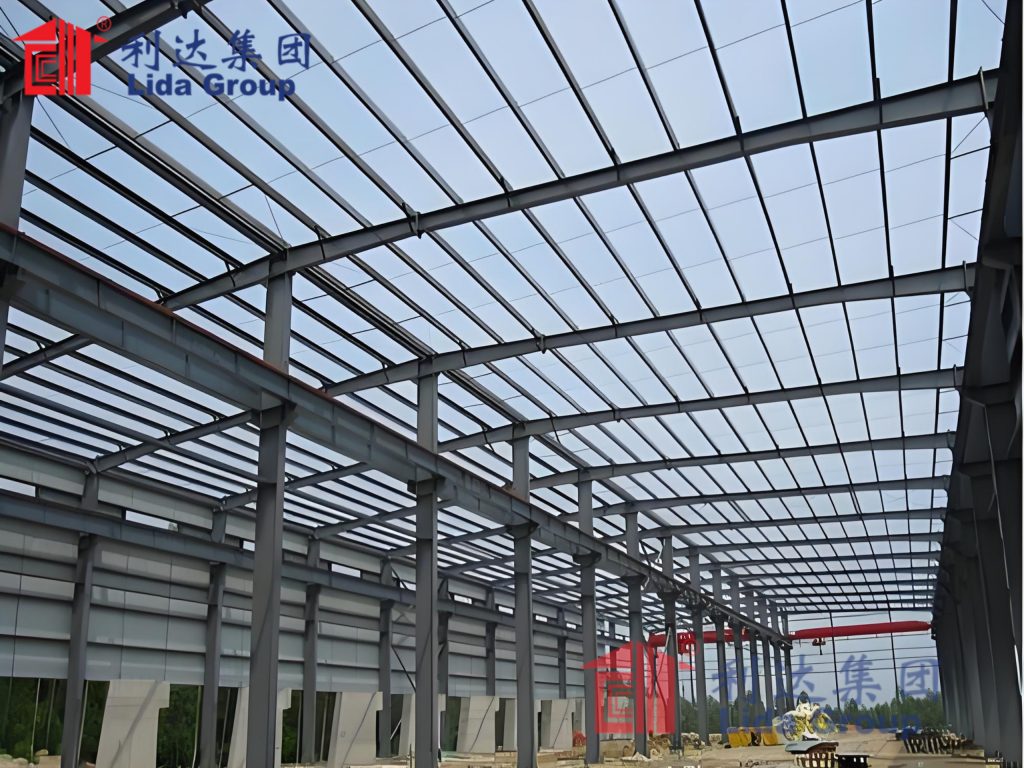
2. The Rise of Vertical Farming
2.1 Concept and Basics
Vertical farming represents a radical departure from traditional agricultural methods. Instead of sprawling across vast tracts of land, crops are grown in vertically stacked layers, often within indoor facilities. This approach maximizes the use of limited space, allowing for high-density cultivation. The controlled environment within vertical farms enables farmers to precisely regulate factors such as temperature, humidity, light, and nutrient levels, creating optimal growing conditions for plants.
One of the key features of vertical farming is the use of hydroponics or aeroponics systems. Hydroponics involves growing plants in a nutrient-rich water solution, eliminating the need for soil. Aeroponics, on the other hand, suspends plant roots in the air and mist them with a nutrient solution. Both methods offer several advantages over traditional soil-based farming, including more efficient nutrient uptake, reduced water usage, and the ability to grow crops in areas with poor or non-existent soil.
In addition to hydroponics and aeroponics, vertical farms often employ advanced lighting systems, such as LED lights, to provide plants with the specific wavelengths of light they need for photosynthesis. These lighting systems can be customized to mimic natural sunlight and adjusted to meet the changing needs of plants at different stages of growth. By controlling the light cycle, farmers can also manipulate the growth rate and yield of their crops.
2.2 Key Drivers Behind Its Growth
The growth of vertical farming can be attributed to several factors. Firstly, the increasing global population has put tremendous pressure on the agricultural sector to produce more food. Traditional farming methods are struggling to keep pace with this demand, especially in the face of limited arable land and the impacts of climate change. Vertical farming offers a solution by allowing for higher crop yields in a smaller footprint, making it possible to produce more food with fewer resources.
Secondly, concerns about food security have become more prominent in recent years. Climate change, natural disasters, and geopolitical conflicts can disrupt traditional food supply chains, leaving communities vulnerable to food shortages. Vertical farming, with its ability to operate independently of external factors such as weather and geography, provides a more stable and reliable source of food. By growing crops locally, vertical farms can reduce the reliance on long-distance transportation and minimize the risk of supply chain disruptions.
Another significant driver of vertical farming is the growing consumer demand for fresh, healthy, and sustainable food. Consumers are becoming more aware of the environmental impact of traditional agriculture and are seeking out food products that are produced in a more sustainable manner. Vertical farming offers the promise of pesticide-free, locally grown produce that is fresher and more nutritious than conventionally grown alternatives. This aligns with the values of many consumers and has helped to fuel the demand for vertically farmed products.
Finally, advancements in technology have played a crucial role in the growth of vertical farming. The development of more efficient lighting systems, climate control technologies, and automated farming equipment has made vertical farming more feasible and cost-effective. These technologies have also made it easier for farmers to manage and monitor their farms, increasing productivity and reducing labor costs.

2.3 Current Market Scenario
The vertical farming market has experienced significant growth in recent years and is expected to continue expanding in the coming decades. According to a report by Markets and Markets, the global vertical farming market was valued at \(4.1 billion in 2021 and is projected to reach \)15.7 billion by 2026, growing at a compound annual growth rate (CAGR) of 31.5% during the forecast period.
North America currently dominates the vertical farming market, accounting for a significant share of the global market revenue. This can be attributed to the region’s strong consumer demand for organic and locally grown food, as well as its favorable regulatory environment and advanced technological infrastructure. However, Asia-Pacific is expected to be the fastest-growing region in the vertical farming market, driven by the region’s large population, rapid urbanization, and increasing awareness of food security and sustainability issues.
The market for vertical farming is highly competitive, with a growing number of companies entering the space. These companies range from small startups to large multinational corporations, each offering unique solutions and technologies. Some of the key players in the vertical farming market include AeroFarms, Plenty, Bowery Farming, and 80 Acres Farms. These companies are investing heavily in research and development to improve the efficiency and productivity of their vertical farming systems and to expand their market reach.
3. Lida Group’s Contribution to Vertical Farming
3.1 Company Overview
Lida Group has established itself as a leading player in the construction and engineering industry, with a particular focus on providing innovative solutions for the agricultural sector. With years of experience and a team of highly skilled engineers and professionals, Lida Group has developed a reputation for excellence in delivering high-quality projects on time and within budget.
The company’s expertise in steel structure engineering has been instrumental in its foray into the vertical farming market. By leveraging its knowledge and capabilities in this area, Lida Group has been able to design and construct multi-level steel farm houses that are specifically tailored to the unique requirements of vertical farming. These structures offer a range of advantages over traditional agricultural buildings, including greater flexibility, durability, and energy efficiency.
In addition to its engineering prowess, Lida Group is also committed to sustainability and environmental responsibility. The company recognizes the importance of reducing the carbon footprint of the agricultural industry and has incorporated sustainable design principles into its vertical farming projects. By using energy-efficient materials and technologies, Lida Group aims to minimize the environmental impact of its operations and contribute to a more sustainable future.
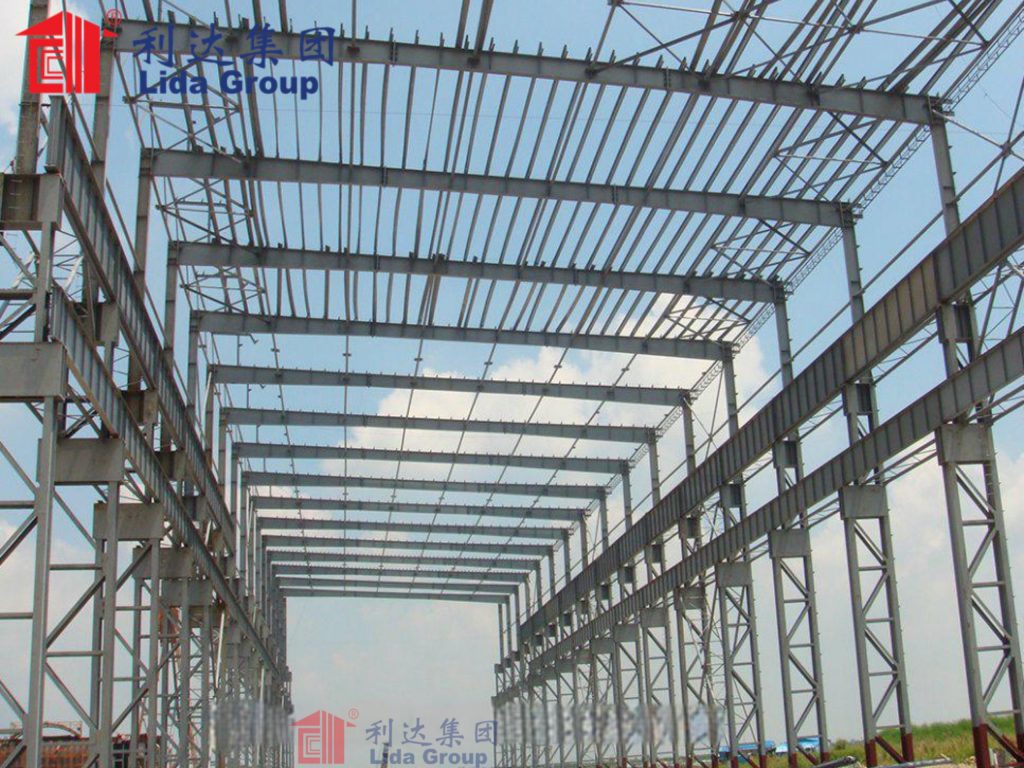
3.2 Multi-Level Steel Farm Houses
3.2.1 Design Features
Lida Group’s multi-level steel farm houses are designed with a focus on functionality, flexibility, and efficiency. The structures typically feature a modular design, allowing for easy customization and expansion. This means that farmers can start with a small-scale vertical farm and gradually increase the size and capacity of their operation as their business grows.
The multi-level layout of the farm houses maximizes the use of vertical space, enabling farmers to cultivate a large number of crops in a relatively small footprint. The floors are typically designed to be adjustable, allowing for easy access to plants for maintenance and harvesting. The structures also incorporate advanced lighting systems, ventilation systems, and climate control technologies to create optimal growing conditions for plants.
Another key design feature of Lida Group’s multi-level steel farm houses is the use of high-quality steel materials. Steel is a strong, durable, and lightweight material that is well-suited for use in agricultural buildings. It is resistant to corrosion, pests, and extreme weather conditions, ensuring the long-term stability and reliability of the structures. The use of steel also allows for greater design flexibility, as it can be easily shaped and fabricated into a variety of configurations.
3.2.2 Functionality and Space Optimization
The multi-level design of Lida Group’s farm houses allows for efficient space utilization. Each level can be dedicated to a specific type of crop or stage of growth, maximizing the productivity of the farm. For example, the lower levels can be used for seed germination and early plant growth, while the upper levels can be reserved for mature plants that require more sunlight and space.
The adjustable floors and shelves in the farm houses make it easy for farmers to access and manage their crops. This reduces the need for manual labor and increases the efficiency of the farming operation. In addition, the modular design of the structures allows for the installation of automated farming equipment, such as conveyor belts, robotic harvesters, and irrigation systems, further improving productivity and reducing labor costs.
The climate control systems in Lida Group’s multi-level steel farm houses are designed to maintain optimal growing conditions for plants. These systems can regulate temperature, humidity, ventilation, and carbon dioxide levels, ensuring that plants have the ideal environment to thrive. By controlling these factors, farmers can reduce the risk of crop diseases and pests and increase the yield and quality of their crops.
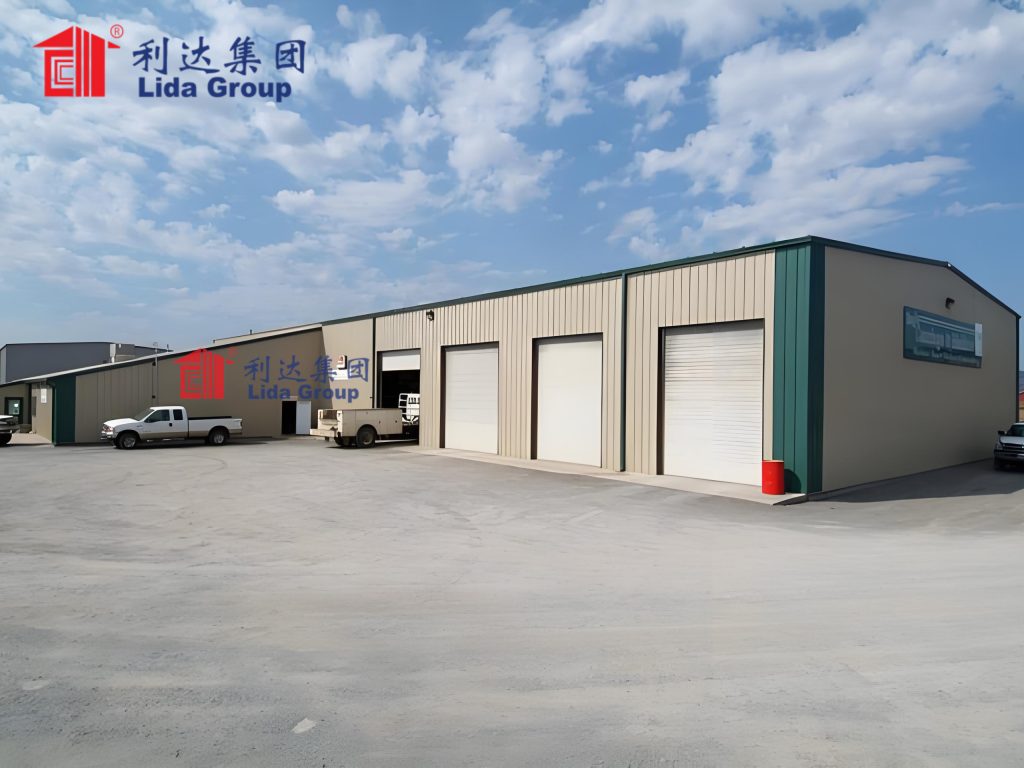
3.3 Precision Steel Structure Engineering
3.3.1 Engineering Excellence
Lida Group’s precision steel structure engineering is at the heart of its vertical farming solutions. The company’s team of engineers uses advanced design software and simulation tools to create detailed plans for each project. These plans take into account factors such as the type of crops to be grown, the local climate, and the specific requirements of the farmer.
The engineering process begins with a thorough analysis of the site and the client’s needs. The engineers then develop a concept design that outlines the overall layout and structure of the farm house. This design is refined and optimized through a series of simulations and calculations to ensure that it meets the highest standards of safety, functionality, and efficiency.
Once the design is finalized, the engineers oversee the fabrication and installation of the steel structure. Lida Group works with a network of trusted suppliers and contractors to ensure that the highest quality materials and construction methods are used. The company’s quality control team conducts regular inspections throughout the construction process to ensure that the project is progressing according to plan and that the finished product meets the client’s expectations.
3.3.2 Impact on Vertical Farming Efficiency
The precision steel structure engineering of Lida Group’s farm houses has a significant impact on the efficiency of vertical farming operations. The use of high-quality steel materials and advanced construction techniques results in structures that are strong, stable, and energy-efficient. This reduces the risk of structural failures and minimizes the need for maintenance and repairs, saving farmers time and money.
The modular design of the structures allows for easy installation and modification, making it possible to adapt the farm house to changing needs and requirements. This flexibility is particularly important in the rapidly evolving field of vertical farming, where new technologies and growing techniques are constantly being developed.
The energy-efficient design of Lida Group’s farm houses helps to reduce operating costs. The structures are designed to maximize natural light and ventilation, reducing the need for artificial lighting and climate control systems. In addition, the use of energy-efficient insulation materials and equipment helps to minimize energy consumption and lower utility bills.
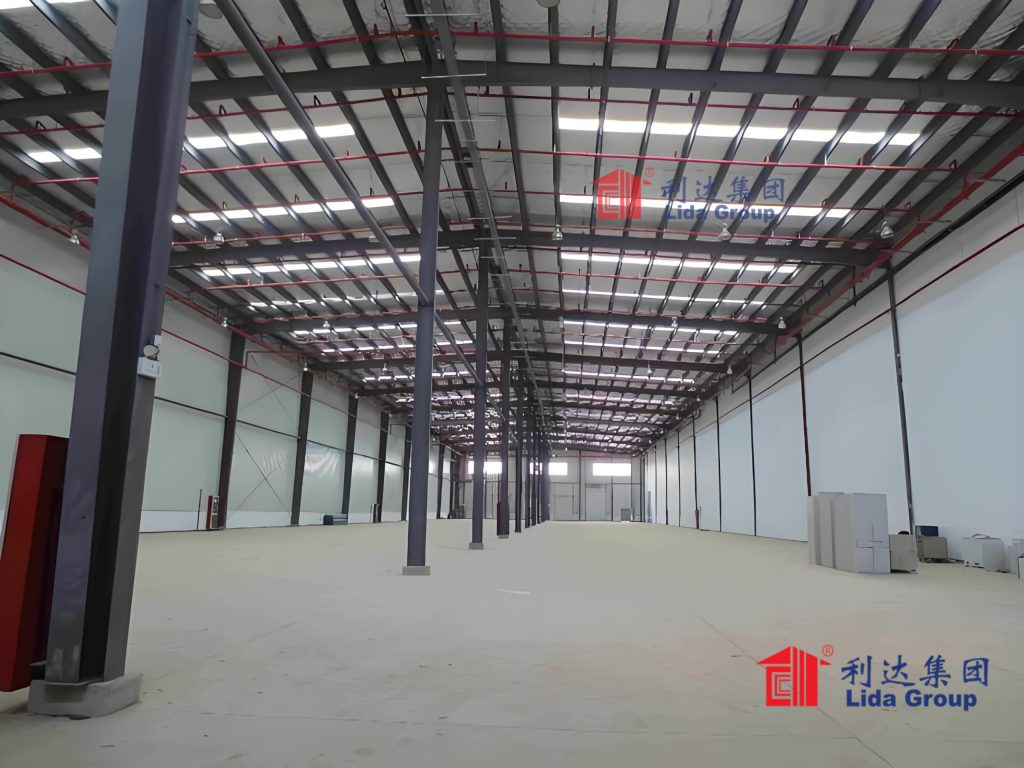
4. Advantages of Lida Group’s Solutions in Vertical Farming
4.1 Enhanced Crop Yields
One of the primary advantages of Lida Group’s multi-level steel farm houses and precision steel structure engineering is the potential for enhanced crop yields. The controlled environment within the farm houses allows farmers to optimize growing conditions for their crops, resulting in faster growth, higher yields, and better quality produce.
By precisely regulating factors such as temperature, humidity, light, and nutrient levels, farmers can create an environment that is tailored to the specific needs of their crops. This eliminates many of the variables that can limit crop growth in traditional farming settings, such as weather fluctuations, pests, and diseases. As a result, plants are able to grow more efficiently and produce higher yields.
The multi-level design of the farm houses also allows for increased planting density, further maximizing crop production. With more plants per square foot, farmers can produce more food in a smaller space, making vertical farming a more efficient and productive way to grow crops.
4.2 Sustainability and Environmental Benefits
Lida Group’s vertical farming solutions offer a range of sustainability and environmental benefits. By growing crops in a controlled environment, vertical farming reduces the need for large amounts of land, water, and pesticides. This helps to conserve natural resources and minimize the environmental impact of agriculture.
In addition, the use of hydroponics or aeroponics systems in vertical farming eliminates the need for soil, reducing the risk of soil erosion and the use of chemical fertilizers. These systems also allow for more efficient use of water, as the nutrient solution can be recycled and reused. This can significantly reduce water consumption compared to traditional farming methods.
The energy-efficient design of Lida Group’s farm houses helps to reduce carbon emissions and minimize the environmental impact of the farming operation. By using natural light and ventilation, and by incorporating energy-efficient insulation materials and equipment, the farm houses require less energy to operate, reducing the reliance on fossil fuels.
4.3 Cost – effectiveness in the Long Run
While the initial investment in a vertical farming system can be significant, Lida Group’s solutions offer long-term cost – effectiveness. The enhanced crop yields and reduced operating costs associated with vertical farming can result in higher profits for farmers over time.
The controlled environment within the farm houses reduces the risk of crop losses due to pests, diseases, and weather conditions. This means that farmers can expect more consistent yields and a more reliable income stream. In addition, the use of automated farming equipment and energy-efficient technologies helps to reduce labor costs and energy consumption, further improving the profitability of the farming operation.
The modular design of Lida Group’s farm houses also allows for easy expansion and customization, making it possible to adapt the system to changing needs and market conditions. This flexibility can help farmers to maximize the return on their investment and ensure the long-term viability of their business.
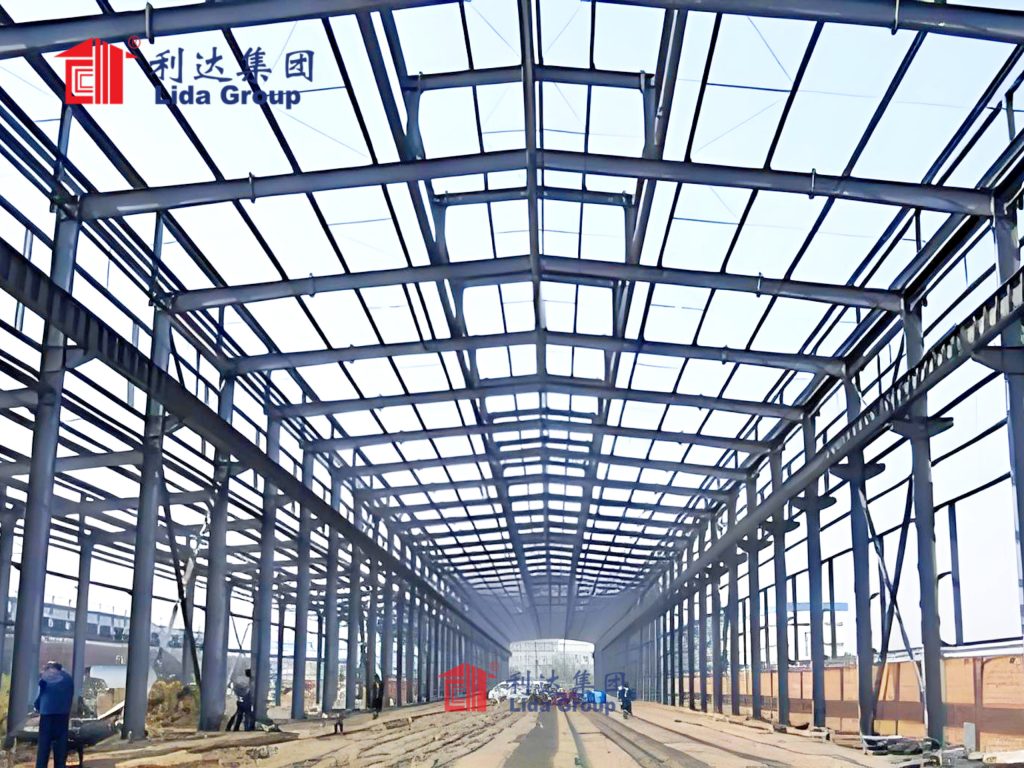
5. Case Studies of Lida Group’s Vertical Farming Projects
5.1 Project 1: [Location]
In [location], Lida Group partnered with a local agricultural company to build a state-of-the-art vertical farm. The project involved the construction of a multi-level steel farm house with a total area of [X] square meters. The farm was designed to grow a variety of leafy greens and herbs using hydroponics and aeroponics systems.
The multi-level design of the farm house allowed for efficient space utilization, with each level dedicated to a specific stage of crop growth. The structure was equipped with advanced lighting systems, climate control technologies, and automated irrigation and fertilization systems. These systems were integrated into a central control system, allowing the farmers to monitor and manage the growing environment remotely.
As a result of the project, the agricultural company was able to significantly increase its crop yields. The controlled environment within the farm house eliminated many of the challenges associated with traditional farming, such as weather fluctuations and pest infestations. The use of hydroponics and aeroponics systems also reduced water consumption and the need for chemical pesticides and fertilizers, resulting in more sustainable and environmentally friendly farming practices.
In addition to the increased crop yields, the vertical farm also provided a more stable and reliable source of income for the agricultural company. The ability to grow crops year-round, regardless of external conditions, ensured a consistent supply of fresh produce to the local market. This helped to improve food security in the region and reduce the reliance on imported food.
5.2 Project 2
Another successful project by Lida Group was the construction of a vertical farm in [location]. This project was unique in that it was designed to be integrated into an urban environment, providing fresh produce to local residents. The vertical farm was built on the rooftop of a commercial building, taking advantage of the available space and the proximity to the consumer market.
The multi-level steel structure of the farm house was designed to be lightweight and easy to install on the rooftop. The structure was equipped with a rainwater harvesting system, which collected and stored rainwater for use in the irrigation system. This helped to reduce water consumption and make the farm more sustainable.
The farm used a combination of hydroponics and aeroponics systems to grow a variety of vegetables and fruits, including tomatoes, cucumbers, and strawberries. The use of LED lighting systems allowed for precise control of the light spectrum, optimizing plant growth and yield. The climate control system was designed to maintain a comfortable temperature and humidity level, regardless of the external weather conditions.
The integration of the vertical farm into the urban environment had several benefits. It provided a local source of fresh, healthy produce, reducing the carbon footprint associated with transporting food from rural areas. It also helped to beautify the urban landscape and create a more sustainable and livable city. In addition, the project created new job opportunities in the local community, as farmers and technicians were needed to operate and maintain the vertical farm.
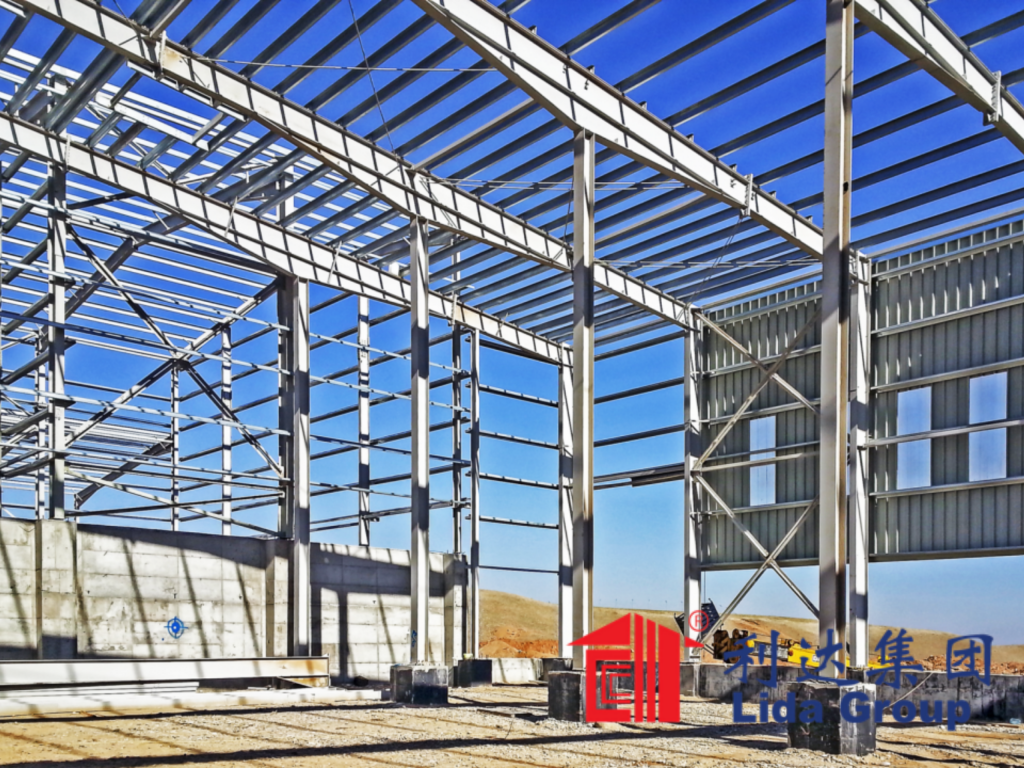
6. Challenges and Solutions in Vertical Farming with Lida Group’s Structures
6.1 Initial Investment Challenges
One of the main challenges in implementing vertical farming, even with Lida Group’s advanced structures, is the high initial investment required. The cost of constructing a multi-level steel farm house, installing advanced farming technologies, and setting up the necessary infrastructure can be substantial. This can be a deterrent for many farmers and agricultural entrepreneurs, especially those with limited financial resources.
To address this challenge, Lida Group offers a range of financing options and partnerships. The company works with financial institutions to provide loans and leasing options to farmers, making it more affordable for them to invest in vertical farming systems. In addition, Lida Group often partners with local governments and agricultural organizations to secure grants and subsidies for vertical farming projects. These partnerships help to reduce the financial burden on farmers and make vertical farming more accessible.
Another solution is to start small and gradually expand the vertical farming operation. Lida Group’s modular design allows farmers to begin with a basic structure and add additional levels and features as their business grows and their financial situation improves. This phased approach helps to manage the initial investment and allows farmers to test the market and gain valuable experience before scaling up their operations.
6.2 Technical and Operational Challenges
Vertical farming requires a certain level of technical expertise to operate and maintain the complex systems involved, such as climate control, lighting, and irrigation. Many farmers may lack the necessary knowledge and skills to manage these systems effectively, which can lead to inefficiencies and reduced crop yields.
Lida Group addresses this challenge by providing comprehensive training and support to farmers. The company offers training programs that cover all aspects of vertical farming, including system operation, maintenance, and crop management. These training programs are designed to equip farmers with the knowledge and skills they need to succeed in vertical farming. In addition, Lida Group provides ongoing technical support, with a team of experts available to assist farmers with any issues or questions they may have.
The company also develops user-friendly control systems that simplify the operation of vertical farming systems. These systems are designed to be intuitive and easy to use, allowing farmers to monitor and manage the growing environment with minimal effort. The control systems can be accessed remotely via a smartphone or computer, enabling farmers to keep track of their crops and make adjustments to the growing conditions from anywhere.
6.3 Energy Consumption Concerns
While vertical farming is generally more energy-efficient than traditional farming in many aspects, the use of artificial lighting, climate control systems, and other equipment can still result in significant energy consumption. This can increase operating costs and have a negative impact on the environment, especially if the energy is sourced from non-renewable sources.
To mitigate this challenge, Lida Group incorporates energy-efficient technologies into its vertical farming solutions. The company uses high-efficiency LED lighting systems that consume less energy than traditional lighting sources while providing the optimal light spectrum for plant growth. The climate control systems are also designed to be energy-efficient, with features such as heat recovery systems and variable speed fans that reduce energy consumption.
In addition, Lida Group explores the use of renewable energy sources to power its vertical farming systems. The company integrates solar panels into the design of its farm houses, allowing farmers to generate their own electricity and reduce their reliance on the grid. In some cases, Lida Group also incorporates wind turbines or other renewable energy technologies, depending on the local climate and available resources.

7. Future Outlook of Vertical Farming with Lida Group’s Innovations
7.1 Technological Advancements
The future of vertical farming looks promising, with ongoing technological advancements expected to further improve the efficiency and productivity of vertical farming systems. Lida Group is at the forefront of these innovations, investing heavily in research and development to enhance its multi-level steel farm houses and precision steel structure engineering.
One area of focus is the integration of artificial intelligence (AI) and machine learning into vertical farming systems. AI-powered control systems can analyze data from sensors throughout the farm, such as temperature, humidity, and light levels, and make real-time adjustments to the growing conditions to optimize crop growth. Machine learning algorithms can also predict crop yields and identify potential issues before they occur, allowing farmers to take proactive measures to prevent losses.
Another area of innovation is the development of more advanced materials for vertical farming structures. Lida Group is exploring the use of lightweight, high-strength materials that can further reduce the weight of the farm houses and improve their energy efficiency. The company is also researching new insulation materials that can better regulate temperature and reduce energy consumption.
7.2 Market Expansion
As the demand for sustainable and locally grown food continues to rise, the vertical farming market is expected to expand significantly in the coming years. Lida Group is well-positioned to capitalize on this growth, with its innovative multi-level steel farm houses and precision steel structure engineering.
The company plans to expand its market reach, both domestically and internationally. In addition to targeting traditional agricultural areas, Lida Group is also focusing on urban markets, where the demand for fresh produce is high and the space for traditional farming is limited. By integrating vertical farms into urban environments, Lida Group can provide local residents with access to fresh, healthy food while contributing to the development of more sustainable cities.
Lida Group also aims to collaborate with other stakeholders in the agricultural industry, such as food processors, retailers, and distributors, to create a more integrated and efficient food supply chain. By working together, these stakeholders can ensure that vertically farmed produce reaches consumers in a timely and cost-effective manner, further driving the growth of the vertical farming market.
7.3 Policy and Regulatory Support
Policy and regulatory support will play a crucial role in the future development of vertical farming. Governments around the world are increasingly recognizing the potential of vertical farming to address food security, environmental, and economic challenges, and are implementing policies and incentives to promote its adoption.
Lida Group actively engages with policymakers and regulatory bodies to advocate for supportive policies for vertical farming. The company provides input on policy development, sharing its expertise and experience to help shape regulations that are favorable to the growth of the industry. Lida Group also works with governments to pilot new vertical farming projects and demonstrate the benefits of the technology, helping to build support for wider adoption.
In the future, we can expect to see more governments implementing policies such as tax incentives, grants, and subsidies for vertical farming projects. There may also be the development of new standards and certifications for vertical farming, ensuring that the produce is safe, high-quality, and sustainable. These policy and regulatory developments will provide a more favorable environment for the growth of vertical farming and enable Lida Group to further expand its business.
8. Conclusion
Vertical farming has emerged as a transformative solution to the challenges facing the global agricultural industry, offering the potential to increase food security, reduce environmental impact, and meet the growing demand for fresh, sustainable food. Lida Group has played a pivotal role in driving the expansion of vertical farming through its innovative multi-level steel farm houses and precision steel structure engineering.
The company’s multi-level steel farm houses provide a robust and customizable infrastructure for vertical farming, with design features that maximize space utilization, enhance functionality, and improve energy efficiency. The precision steel structure engineering ensures that these farm houses are strong, stable, and durable, reducing the risk of structural failures and minimizing maintenance costs.
Lida Group’s solutions offer a range of advantages, including enhanced crop yields, sustainability and environmental benefits, and long-term cost-effectiveness. The company’s case studies demonstrate the success of its vertical farming projects, both in rural and urban environments, and highlight the positive impact they have on food security, the environment, and local communities.
While there are challenges to the widespread adoption of vertical farming, such as initial investment costs, technical expertise requirements, and energy consumption concerns, Lida Group has developed effective solutions to address these challenges. Through financing options, training and support, and the integration of energy-efficient technologies, the company is making vertical farming more accessible and sustainable.
Looking to the future, the outlook for vertical farming is bright, with technological advancements, market expansion, and policy support expected to drive further growth. Lida Group is well-positioned to continue leading the way in vertical farming innovation, with its commitment to research and development, market expansion, and policy advocacy.
In conclusion, Lida Group’s multi-level steel farm houses and precision steel structure engineering are fueling the expansion of vertical farming, offering a sustainable and efficient way to grow food for the future. As the world continues to face the challenges of population growth, climate change, and food security, vertical farming will play an increasingly important role, and Lida Group will remain at the forefront of this agricultural revolution.
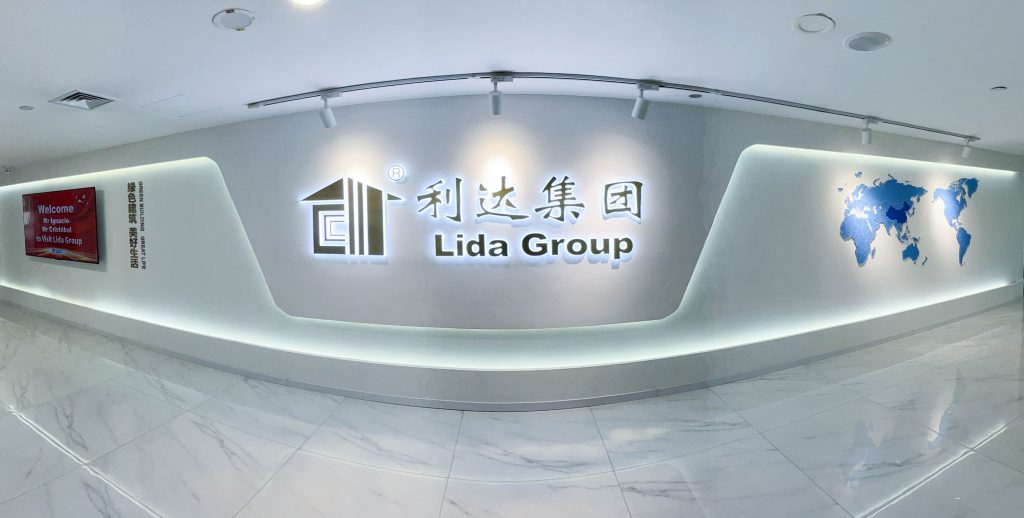
Related news
-
Drone-Surveyed Precision: Lida Group Implements Millimeter-Accurate Steel Structure Construction for Pharma-Grade Warehouses
2025-07-24 10:01:58
-
Customized Agricultural Solutions: Lida Group Engineers Climate-Controlled Steel Farm Houses with Modular Steel Frame Technology
2025-07-24 14:39:01
-
Post-Pandemic Logistics Boom: Lida Group Scales Up High-Quality Steel Warehouse Production Using Automated Frame Assembly
2025-07-25 16:02:52
contact us
- Tel: +86-532-88966982
- Whatsapp: +86-13793209022
- E-mail: sales@lidajituan.com


